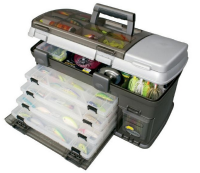Getting your log book is an exciting experience because you’re just one step closer to being able to drive by yourself. That sense of independence is like no other. One of the most exciting things for me was no longer needing to phone my parents every time I required a lift to and from work. So once you pass your Practical Driving Assessment, you’re then on your way to getting your license.
But let’s not get too ahead of ourselves...you have to pass your assessment first, and Martin’s Motor Cycle & Driver Training are here to help you every step of the way. Owners, Craig and Sandie Martin, say that if you follow these 5 simple tips, you’ll be on your way to driving independently!
1. Start with an instructor:
So you’ve passed your online Learners Theory Test and now have your learners permit. Brilliant. Now you’re on your way towards getting your log book with 25 hours of practice in between. Sandie highly recommends that the first person you should really start off your driving with is your instructor. There’s nothing wrong with driving with a parent at first, but times have changed and there are now different road rules and protocols that your parents may not even know about. So the last thing you want is for Mum or Dad to accidentally teach you bad habits when you’re just learning how to drive.
Sandie recommends having around 3-5 lessons with an instructor first before you start driving with a parent. You can even have Mum or Dad in the backseat while having your lesson. That way, it gives both of you the opportunity to learn about any new road rules you may be unaware about and to ask questions at the end.
2. Get used to driving with different people:
When you eventually sit your Practical Driving Assessment, you’ll be sitting next to someone that is a complete stranger. And to some, this can be quite nerve-racking, which can cause you to slip up and make mistakes you wouldn’t normally make. So the best thing to do is to practice driving with as many different people as possible. This can be your Mum, Dad, Aunty, Uncle, or even your neighbour. Because once you sit your test, you won’t even notice that it’s with a stranger and the nerves will settle.
3. Practice in wet weather:
Weather can be extremely unpredictable; so you’re going to want to practice in all weather conditions before you do your test. Driving in the rain is completely different to driving on a dry road. So prepare yourself for every possible scenario and take the proper precautions if it begins to rain during your assessment. Failing to slow down on a slippery road will definitely deduct a lot of points from your overall mark.
4. Don’t be put off by your assessor writing:
One of the main reasons as to why students fail their Practical Driving Assessment is because nerves get in the way. This may cause learners to do things they wouldn’t normally do, such as failing to give way, speeding or rolling through a stop sign. You’ll notice that throughout the test, your assessor will be writing down notes. Don’t let this put you off. They’re just ticking the tasks that you have already completed and yes, they may be writing something negative, but chances are, they’re also writing something positive about your driving performance. Constantly looking over to see what your assessor is writing will take your eyes off the road, which can cause an accident. Don’t get distracted by them doing their job.
5. Have a lesson beforehand:
Sandie and Craig recommend having a lesson one week before your test, and a final lesson an hour before your test. Having a lesson one week beforehand will allow your instructor to correct any bad habits that may have been developed, and having a lesson one hour beforehand will calm your nerves and it gives your instructor the opportunity to rectify any small errors that have been made.
It is also a wise idea to undergo your assessment in your instructors’ car. This is because the car you might want to use may not meet the road safety standards. For example, you may have only one tail light working and not even know about it because it’s on a part of your car which you don’t normally look at while driving. Handbrakes are also a good example. If your cars handbrake isn’t situated in the centre console, the car cannot be used for the assessment. This is because if the handbrake is in a location that the assessor doesn’t have easy access to, there’s no way for them to stop the car if an accident is about to occur. Using your instructors’ car is the wisest thing to do, as it not only meets the road safety standards, but it’s also a car that you are relatively familiar with, especially if you're doing a lesson right before your test.
Doing the test really isn’t as frightening as it sounds and chances are, if you’re confident and know what you’re doing, you’ll pass it with flying colours. If you are a learner and are looking at doing your Practical Driving Assessment, speak to Sandie or Craig Martin from Martin’s Motor Cycle & Driver Training. They specialise in all forms of driver training, including motor vehicles (both manual and automatic), motorcycles, scooters, trucks and more. They operate in Geraldton, but travel all over the Midwest for remote customers.
- They’re located on 32 Bedford Street, Geraldton.
- Phone 0457 377 714
- They’re open all hours from Monday – Sunday















































